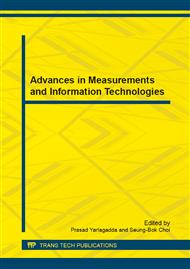p.141
p.146
p.151
p.155
p.160
p.166
p.171
p.175
p.181
Air Bubble Size Measurement in a Laboratory Flotation Cell
Abstract:
Air bubble size distribution in a laboratory flotation cell was investigated by using of image analysis technology in this paper. Results showed that it was feasible to determine the air bubble size according to image analysis software. For a porous media-aerated flotation cell, bubble size was dependent on poles size of porous media. Furthermore, operating parameters of the cell could affect the size. Mean bubble diameters increased with increasing of air flow rate. In contrast, it decreased when adding deinking agent. Its decreasing with increasing pulp flow rate under given conditions illustrated the fact that proper turbulence strength at the inlet of air bubbles was favorable for reducing bubble size. Gas holdup increased with increasing air flow rate to some extent, but it had a peak value. Gas holdup would rise obviously when deinking agent existed. An efficient approach to enhancing bubble surface area flux was to increase air flow rate and keep small bubble size at the same time.
Info:
Periodical:
Pages:
160-165
Citation:
Online since:
February 2014
Authors:
Keywords:
Price:
Сopyright:
© 2014 Trans Tech Publications Ltd. All Rights Reserved
Share:
Citation:


